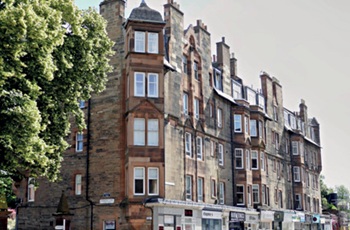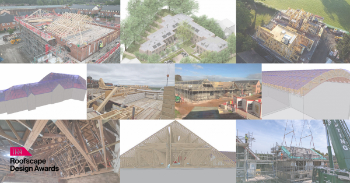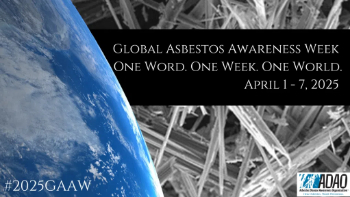Collaborative Reporting for Safer Structures UK
Contents |
[edit] Introduction
Collaborative Reporting for Safer Structures UK (CROSS-UK) is a collaborative body that compiles and publishes free safety information for built environment professionals. Formerly known as the Confidential Reporting on Structural Safety, CROSS was founded in 2005 as a system for the collation of data on matters of concern relating to structural safety.
CROSS operates internationally; following in the footsteps of CROSS-UK, the IStructE launched in Australia with CROSS-AUS in 2018 and then in 2019 the network grew to the US with CROSS-US formed by the Structural Engineering Institute (SEI) of the American Society of Civil Engineers (ASCE).
The UK government 'Construction Products Reform Green Paper 2025' published 26 February 2025, defines Collaborative Reporting for Safer Structures UK (CROSS-UK) as 'A confidential reporting system which allows professionals working in the built environment to report on fire and structural safety issues. These are then published anonymously to share lessons learned, create positive change, and improve safety.'
[edit] Background
The establishment of the CROSS safety reporting system was based on work by the Standing Committee on Structural Safety (SCOSS). In 2012, SCOSS and CROSS were officially aligned under the name Structural-Safety.
In 2018, CROSS was incorporated into the recommendations of the Hackitt report. The system was specifically mentioned under recommendation 1.4c, which states, ‘For all other buildings, the current CROSS scheme should be extended and strengthened to cover all engineering safety concerns and should be subject to formal review and reporting at least annually.’
After discussions between Structural-Safety and the Ministry of Housing, Communities & Local Government (MHCLG), funding for CROSS-UK was increased in 2020 to include fire safety in compliance with the aforementioned recommendations in the report. The CROSS system expanded in 2021 to include structural safety as well as fire safety and all three entities - Structural-Safety, SCOSS and CROSS - are united to operate under a new name, Collaborative Reporting for Safer Structures (CROSS).
[edit] Importance of safety reporting
The new name for the organisation is meant to illustrate the connection and to respond to the overlap - both professional and physical - between structural safety and fire safety. CROSS will continue to provide built environment professionals the opportunity to make confidential reports when they witness either type of safety issue.
The information collected in the reports is confidential, but it is shared with a panel of expert volunteers who review and comment on findings to provide additional insight into incidents. In addition to educating others about the importance of identifying and relaying structural safety issues and building incidents (such as near misses), reports are intended to:
- Promote culture change.
- Share lessons learned.
- Find issues that could foreshadow risk.
- Identify shortfalls or vulnerabilities.
- Improve competency through training.
- Support regulatory activities.
- Inform professional education activities.
- Create proactive attitudes about preventing safety risks.
[edit] Related articles on Designing Buildings Wiki
- Fire prevention on construction sites.
- Hackitt review of the building regulations and fire safety, final report.
- Health and safety.
- Health and safety for building design and construction.
- Independent review of the building regulations and fire safety.
- Ministry of Housing, Communities and Local Government (MHCLG).
- Reporting accidents and injuries on construction sites.
- The design of temporary structures and wind adjacent to tall buildings.
Featured articles and news
British architecture 1919–39. Book review.
Conservation of listed prefabs in Moseley.
Energy industry calls for urgent reform.
Heritage staff wellbeing at work survey.
A five minute introduction.
50th Golden anniversary ECA Edmundson apprentice award
Showcasing the very best electrotechnical and engineering services for half a century.
Welsh government consults on HRBs and reg changes
Seeking feedback on a new regulatory regime and a broad range of issues.
CIOB Client Guide (2nd edition) March 2025
Free download covering statutory dutyholder roles under the Building Safety Act and much more.
AI and automation in 3D modelling and spatial design
Can almost half of design development tasks be automated?
Minister quizzed, as responsibility transfers to MHCLG and BSR publishes new building control guidance.
UK environmental regulations reform 2025
Amid wider new approaches to ensure regulators and regulation support growth.
The maintenance challenge of tenements.
BSRIA Statutory Compliance Inspection Checklist
BG80/2025 now significantly updated to include requirements related to important changes in legislation.
Shortlist for the 2025 Roofscape Design Awards
Talent and innovation showcase announcement from the trussed rafter industry.
OpenUSD possibilities: Look before you leap
Being ready for the OpenUSD solutions set to transform architecture and design.
Global Asbestos Awareness Week 2025
Highlighting the continuing threat to trades persons.
Retrofit of Buildings, a CIOB Technical Publication
Now available in Arabic and Chinese as well as English.
























